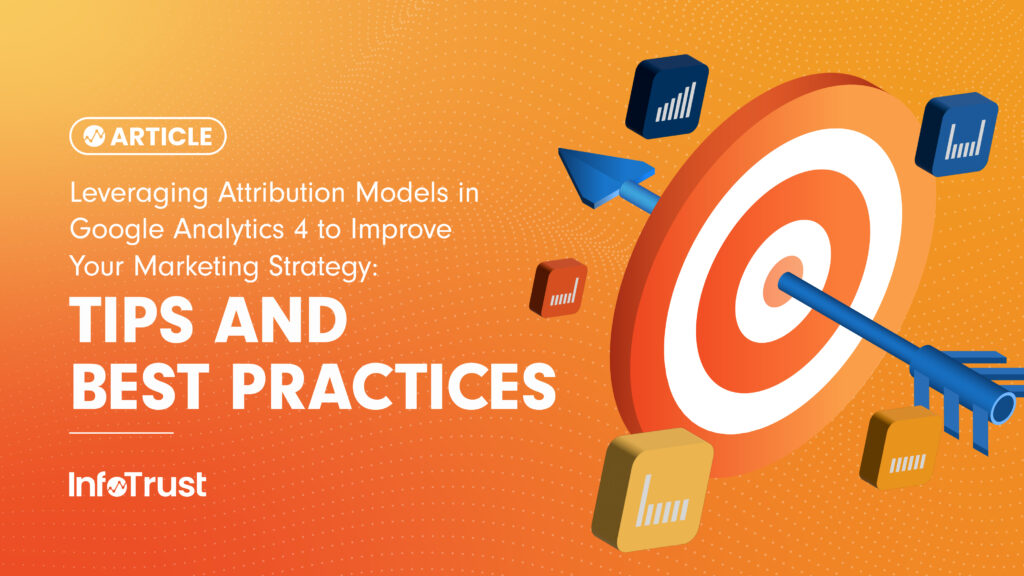In the dynamic landscape of digital marketing, understanding the customer journey is crucial for optimizing strategies and maximizing ROI. Google Analytics 4 (GA4) introduces advanced attribution models, offering marketers a more comprehensive view of how different touchpoints contribute to conversions.
In this blog post, we will explore the significance of attribution models in GA4 and provide tips and best practices for leveraging them effectively. We will also cover what an attribution model is.
Why Attribution Models Matter
Attribution models help marketers attribute value to different interactions a user has with their brand before making a conversion. GA4’s attribution models go beyond traditional last-click models, providing a more nuanced understanding of the customer journey. This is essential in today’s multi-channel, multi-device world where customers interact with brands through various touchpoints.
Think about attribution this way: a user comes to your site via Google search. They then are targeted by your social media posts, which bring them back to your site. The user signs up for your email program. Clicking a link in the email sent to them, they then convert.
Who should get credit for this conversion? Many would say the email (last touch); some would say organic search (first touch), as it is what brought the user to your site initially. But what about that social media click? Is it useless? It did move the user along to sign up for your email, after all. Attribution modeling allows you to look at these various touchpoints and assign conversion credit to each one, thus helping you understand the value of various marketing touchpoints.
Read more about attribution modeling in GA4.
Types of Attribution Models in GA4
GA4 offers a range of attribution models, each with its own strengths and weaknesses. These include:
Paid and Organic Last Click: Attributes all credit to the final paid or organic touchpoint before conversion.
Google Paid Channels Last Click: Attributes all credit to the last Google-paid channel in the journey before conversion.
Data-Driven: The default model; this uses your own conversion information to divide credit among touchpoints using AI and machine learning.
Note: GA4 has removed the traditional first/last touch and position-based models you may be familiar with from UA. The data-driven attribution model is a solid replacement for these models in your reporting. However, always test any models before using them for reporting.
Tips for Effective Attribution Modeling
Understand Your Customer Journey
Before choosing an attribution model, understand how your customers interact with your brand. Identify key touchpoints and their influence on conversions. It is critical to understand your marketing objectives before you try to analyze their effect on your site.
Experiment with Multiple Models
GA4 allows for experimentation with different attribution models. Test multiple models to find the one that aligns best with your business goals. Use the Model Comparison Report to view how different models affect your analysis.
Note: you will need to have at least one conversion event configured in GA4 to use attribution modeling.
Analyze Cross-Channel Data
Attribution models in GA4 consider cross-channel data, providing insights into how different channels contribute to conversions. Analyze this data to allocate resources effectively. In our initial example, analysis may suggest that focusing on SEO to bring in initial users will be valuable, or that iterating off of your social media campaign will help you convert more users to sign up for email.
Best Practices for Implementation
Set Clear Objectives
Clearly define your marketing objectives and align your chosen attribution model with those goals. Without clear marketing objectives, it is difficult to move forward.
Regularly Review and Adjust
The digital landscape evolves, and so should your attribution strategy. Regularly review and adjust your models based on changing consumer behavior and market trends. Data-driven attribution models should be self-adjusting but compare performance to other models on a regular basis.
Integrate with Marketing Platforms
Integrate GA4 with your marketing platforms to streamline data collection and ensure accurate attribution.
Educate Your Team
Ensure your marketing team is well-versed in attribution models and understands how to interpret the insights derived from GA4. Hold regular workshops, provide deep analysis of the data, and show trends over time.
Leveraging attribution models in GA4 is a game-changer for marketers aiming to understand and optimize the customer journey. By adopting the right models and following best practices, businesses can make data-driven decisions, allocate resources efficiently, and enhance overall marketing strategy effectiveness in the digital age.


